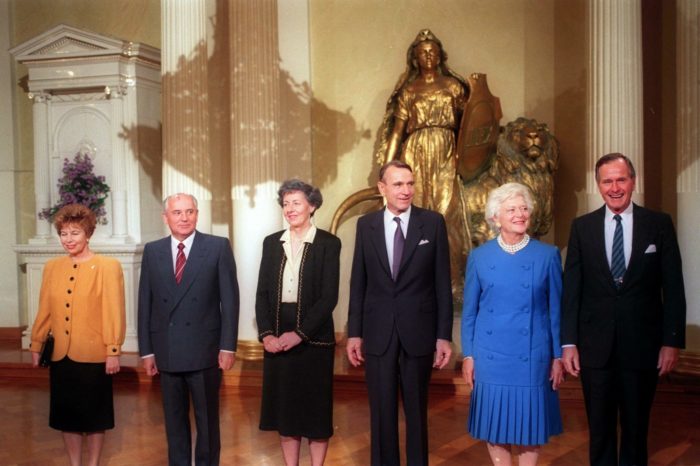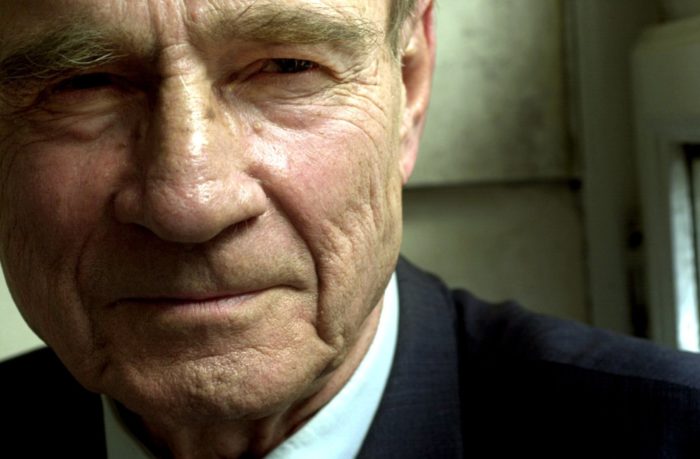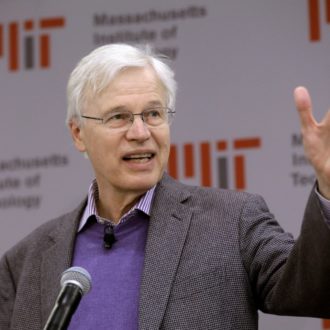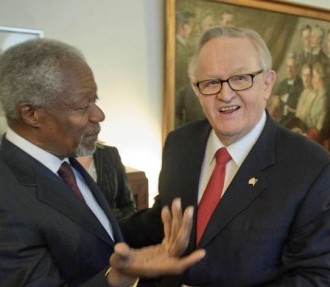Mauno Henrik Koivisto served two six-year terms as president of the Republic of Finland between 1982 and 1994. He was born on November 25, 1923 in the southwestern city of Turku and passed away on May 12, 2017 in Helsinki.
After succeeding Finland’s long-term president Urho Kekkonen, Koivisto gave parliament a more prominent role in Finland’s democratic system. By the end of his period in office, he had found a new place for Finland in a rapidly evolving Europe.
Koivisto won presidential elections in 1982 and 1988, with his popularity extending across traditional political party boundaries.
Many Finns knew him by the nickname “Manu.” He was regarded as a decent, handsome and relaxed man of the people, somewhat prone to ramble during his speeches. This image certainly suited Koivisto himself, and he carefully nurtured it.
In political circles people knew quite a different Koivisto: a skilled strategist who didn’t waste time on petty bickering, since he always had a master plan in mind. He successfully achieved this plan in his own career, as well as during his time as head of state.
Koivisto did not shirk from forceful action. He knew that there was no room at the top for the soft-hearted.
From working man to PhD

President Mauno Koivisto and his wife Tellervo wave before boarding a plane for an official visit to Sweden in 1982, early in his presidency.Photo: Matti Björkman/Lehtikuva
Koivisto was the first Finnish president from a left-wing background, from the Social Democratic Party (SDP) – and the first with working-class roots.
He also represented a generation who came of age in wartime. As a young man he fought against the Soviets in the Continuation War (1941–44). After the war he did hard manual work in the Turku Harbour, while also studying until he obtained a PhD in sociology.
Throughout his life Koivisto lived by the virtues he learnt in his religious, working-class childhood home. He had a modest lifestyle, and was never prone to extravagant gestures in his private life or in politics.
Koivisto felt a strong Finnish identity, but from his youth he was also an internationalist. Friendship between peoples was never an empty political cliché to him. When at the start of his presidency he said he wanted to “build world peace,” the promise came right from his heart.
No early ambition to enter full-time politics
The Finnish people first became aware of Koivisto when he was appointed minister of finance in spring 1966, moving from his previous position running the Helsinki Workers’ Savings Bank.
Though Koivisto willingly participated in academic debates on economic policy, and was politically active within the SDP, earlier in his life he had not wanted to go into politics as his main career.
In 1967 Koivisto had only just been named governor of the Bank of Finland when President Urho Kekkonen enticed him to take on the mantle of prime minister.
Kekkonen and Koivisto worked well together until the spring of 1970, when their opinions of how Finland should regard the planned Nordic economic alliance Nordek differed radically. Koivisto wanted Finland to join Nordek, but Kekkonen was suspicious about the project. Koivisto then returned to the Bank of Finland, where he stayed for nine long years. The President and the country’s leading banker had to get along, though it was far from easy.
Mauno Koivisto returned to the hurly burly of everyday politics in spring 1979. He served as prime minister again until autumn 1981, when Kekkonen, who had led Finland for 25 years, fell ill, and Koivisto became acting president until elections could be held.
Bringing Finland closer to Europe

During the Helsinki Summit in September 1990, Finnish President Mauno Koivisto and his wife Tellervo (centre) hosted Soviet President Mikhail Gorbachev and his wife Raisa (left) and US President George Bush and his wife Barbara.Photo: Juha Kärkkäinen/Lehtikuva
At the start of his presidency Mauno Koivisto was 58, with plenty of experience in domestic politics, particularly in economic policy. Contrastingly, he was not so knowledgeable in the field of foreign policy, and approached it very cautiously during his first six-year term.
Koivisto’s foreign policies continued broadly along the lines of those of his predecessors, Kekkonen and Juho Paasikivi, especially with regard to relations with the Soviet Union. The Finnish-Soviet Friendship Agreement was extended for 20 more years.
In domestic politics Koivisto was keen to strengthen the roles of Parliament and the government, while reducing the President’s own power and influence.
During Koivisto’s second term, from 1988 to 1994, Finland’s external relations changed greatly, due to upheavals in both Eastern and Western Europe.
In the East the Soviet system collapsed, while in the West cooperation intensified. Relations between the great powers also changed as the Cold War ended. Since 1983 Koivisto had corresponded in secret with both Mikhail Gorbachev and George H.W. Bush. In autumn 1990 the leaders of the two superpowers expressed a desire to meet in Helsinki. This choice of venue clearly reflected Koivisto’s prominent role in encouraging such a summit.
Finland’s relations with both the Soviet Union and the US had remained good through the final stages of the Cold War. During this period Koivisto also encouraged Gorbachev to persevere with his dramatic reforms to the Soviet system.
Under Koivisto’s leadership Finland resolved to apply for EU membership in the winter of 1992. This was a momentous decision, one of the main political landmarks of Finland’s history since independence. Under the Finnish Constitution at that time, only the President could initiate such a move.
Membership negotiations concluded on March 1, 1994, just a few hours after Koivisto had handed over the presidency to his successor, Martti Ahtisaari.
Trust that everything’s going well

Mauno Koivisto in 2001, when the Swedish-language version of his autobiography was published.Photo: Dan Hansson/ TT/Lehtikuva
Until recent years Koivisto continued to work in his small office in Helsinki. He wrote several books, but only occasionally participated in political debate. He could often be seen on the streets of Helsinki or taking a tram. He tried to keep active even though his strength was fading.
In January 2013 Koivisto granted what would be his last newspaper interview to Helsingin Sanomat, Finland’s largest daily. When asked about the worthwhile things in life, he replied: “In life it’s usually wise to trust that everything’s going well, even when that’s not what you really believe. All too often threats have started to actually materialise namely because people have been preparing to deal with them.”
By Unto Hämäläinen, May 2017
This article was originally published in Finnish in the newspaper Helsingin Sanomat on May 13, 2017.
The writer is a journalist who specialises in Finland’s political history





